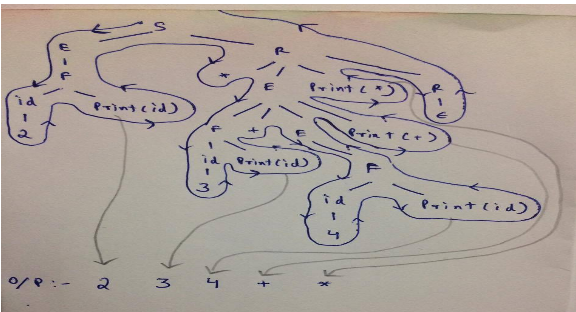考虑以下翻译方案。
S→ER
R→* E {print(“ *”);} R | ε
E→F + E {print(“ +”);} | F
F→(S)| id {print(id.value);}
id是代表整数的令牌,而id.value代表相应的整数值。对于输入“ 2 * 3 + 4”,此转换方案将打印
(A) 2 * 3 + 4
(B) 2 * +3 4
(C) 2 3 * 4 +
(D) 2 3 4 + *答案: (D)
说明:解决问题所需的背景–语法定向翻译和
解析树结构。
Explanation : We are given L-Attributed Syntax Directed Translation as
semantic actions like printf statements are inserted anywhere on the
RHS of production (R → *E{print(“*”);}R). After constructing the parse tree
as shown below from the given grammar, we will follow depth first order left
to right evaluation in order to generate the final output.
解析树: 
Just follow the arrows in the picture (This is actually Depth first
left to right evaluation ) and the moment we take exit from any child
which is printf statement in this question, we print that symbol which
can be a integer value or ‘*’ or ‘+’.
评估 : 
该解释由Pranjul Ahuja提供。
这个问题的测验